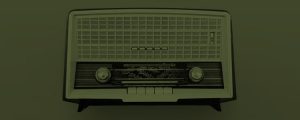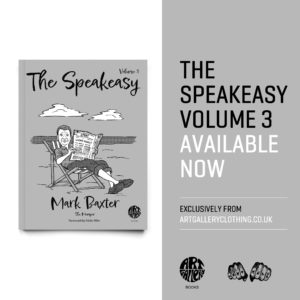
Like many of you now reading this, I first heard the name Delia Derbyshire, ‘the trail blazing pioneering electronic music innovator’ due to her contribution to the theme tune for the TV show Doctor Who. I recently read more on her time working at the ground-breaking, nutty old world of the BBC Radiophonic Workshop, so it seemed high time for a Speakeasy blog on her.
Delia Ann Derbyshire was born on the 5th May 1937 in Coventry to parents Emma and Edward Derbyshire. Edward was a sheet-metal worker. Delia had one sibling, a sister, who sadly died at a young age. The family moved to Preston soon after the horrific Coventry Blitz of 1940, and lived there with relatives. A bright child, Delia taught other children to read and write in her primary school from the age of 4. She was also a lover of the ‘wireless’ from an early age, as she later commented.
‘The radio was my education,’
She took piano lessons from the age of 8 and upon leaving school later, was accepted at both Oxford and Cambridge to study mathematics on a scholarship. However, her true passion lay in music, and she eventually shifted her focus to the subject, graduating with a degree in mathematics and music in 1959. She at first found work at the United Nations in Geneva and later in the promotion dept of music publishers Boosey & Hawkes.
Her journey into electronic music began when she joined the BBC Radiophonic Workshop in 1960. This was a pioneering group within the BBC dedicated to creating innovative sound effects and music for radio and television programmes. At the workshop, Derbyshire encountered cutting-edge technology, including reel-to-reel tape machines, oscillators, and other electronic equipment that would become the tools of her trade.
Her work there was marked by her fearless experimentation and creativity. She had an exceptional ability to manipulate sound, transforming ordinary noises into otherworldly compositions. Her innovative approach to music production was particularly evident in her ground-breaking realisation of Ron Grainer’s Doctor Who theme in 1963, which she worked on alongside engineer Dick Mills. The original composition was a simple and catchy tune, but it was Derbyshire who brought it to life in a way that would forever define the sound of the series. Using tape manipulation techniques, she created the otherworldly and hauntingly futuristic soundscape that became synonymous with the programme. When the composer Grainer first heard what she had done to his composition he said…
‘Did I really write this?’ to which Delia replied: ‘Most of it…’
To give him his due, he attempted to give her a co-composer credit , but the meddling bureaucrat’s at Auntie Beeb, declared they wanted the members of the workshop to remain anonymous.
I suppose in a way, I was experimenting in psycho-acoustics.
Derbyshire’s contributions to electronic music extended beyond her work on Doctor Who.
In 1966, she recorded a demo with Anthony Newley entitled Moogies Bloogies but after Newley moved to the United States, the song never saw the light of day till many years later. Then using the pseudonym of Li De la Russe she created music for the Standard Music Library. Many of these recordings, were later used on TV, for shows like The Tomorrow People and Timeslip. She also worked on the sound design for Peter Hall’s production of Macbeth in 1967 and performed electronic music at the Roundhouse in Camden alongside featured work by Paul McCartney, and later composed a score for a Yoko Ono short film called Wrapping Event.
She continued to explore the artistic potential of electronic sound in various projects, collaborating with fellow electronic music pioneers such as Brian Hodgson and David Vorhaus. Together, they formed the experimental music group White Noise and released the ground-breaking album An Electric Storm in 1969, which pushed the boundaries of electronic music and featured innovative use of synthesizers and tape manipulation.
Despite facing constant challenges and gender bias in a male-dominated field, Derbyshire’s determination and creativity shone brightly. She demonstrated that talent knows no gender boundaries and would go on to leave a lasting legacy as a female pioneer.
She effectively retired from producing music in 1975 and then worked in various jobs, such as for British Gas as a radio operator. She also assisted at the LYC museum and gallery run by Chinese artist Li Yuan Chia in a remote part of Cumbria in the mid 70s. She returned to London in 1978 and then relocated again to Northampton with life partner Clive Blackburn.
2001 saw her return to music, when she provided sounds to Peter Kember of Synchrondipity Machine, Sadly by that stage in her life, it is said she was struggling with alcoholism and sadly died of renal failure aged 64 in July that same year.
An archive of her work from over the previous decades was found on 260 reel to reel tapes in her attic after her death, though none of that has been released -so far – due to copyright issues.
Since her death, her achievements have been subsequently celebrated with various honours such as a street named after her in Coventry called Derbyshire Way and a blue plaque unveiled at her former home in 2017. That same year she was awarded a posthumous doctorate by Coventry University.
In recent years, there has also been a resurgence of interest in her life, with documentaries, books, and exhibitions celebrating her contributions to music and sound art. She is now viewed as the ‘the unsung heroine of British electronic music’, with musicians such as Aphex Twin, the Chemical Brothers and Paul Hartnoll of Orbital all citing her as an influence.
As I do from time to time, I’ll leave the last word to the subject of the blog, though in this case, here’s something she told her colleague Brian Hodgson.
‘What we are doing now is not important for itself, but one day someone might be interested enough to carry things forwards and create something wonderful on these foundations.’
Wise words indeed.
The Mumper of SE5
Read The Mumper’s other weekly musings on ‘The Speakeasy’ blog page
ART GALLERY CLOTHING
Knitwear – Use Promo Code agc10spk for a 10% Discount
THE SPEAKEASY VOLUME 3 – AVAILABLE NOW
THE SPEAKEASY Volume Three by Mark Baxter (The Mumper)
Illustrations by Lewis Wharton
Foreword by Eddie Piller
Available to ORDER exclusively in the Art Gallery Clothing SHOP
JOIN US
Sign up to our newsletter and receive an exclusive promo code, latest news & Art Gallery Clothing offers.




